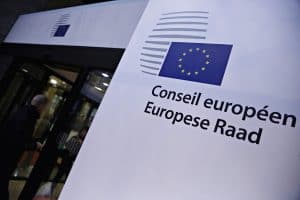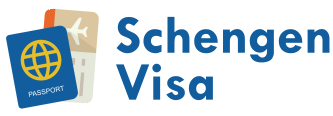European Travel Information and Authorization System
ETIAS – European Travel Information and Authorisation System

Why does ETIAS exist?
As you may know, Europe is a bustling travel and business capital of the world and as such, there are thousands and millions of people traveling in and out of the EU each day. Specifically, there are many countries outside of the EU whose citizens have the ability to enter the EU Schengen Zone. Entries by these citizens do not require a visa. Currently, there are about 62 countries that fit this description and have citizens who can legally enter the EU without a visa.
These entries do come with some restrictions. For those who are going to enter the Schengen Zone, there is a restriction of up to 90 days that can be spent inside. In addition to the time allowed to be spent inside the Schengen Zone without a visa, there are other restrictions as well. Those entering under this designation are not allowed to work or study. Visitors who come into the Schengen Zone are allowed to engage in business meetings or activities or also act as tourists.
In the past, this system has worked fine. However, in recent years, there have been rising concerns over the threat of terrorism and the danger of an overworked and overcrowded tourism system. Thus, the need has arisen for a system to better manage who enters and exits the EU borders. The solution to this problem so far seems to be ETIAS. ETIAS was a solution created by the European Commission and it aims to streamline, optimize, and overall better execute the entering and exiting of citizens and non-citizens at the EU border.
In this article
Whether you are a citizen of the EU and are curious about the ETIAS system or you are a traveler that needs to know the intricacies of this system and how it restricts you, it is imperative that you use a trusted source for this information. We will outline exactly what ETIAS is, why it was created, how it works, and answer some of the most popular questions that are posed about the ETIAS system.
About ETIAS
The first step to understanding ETIAS and being able to effectively adhere to the guidelines of it, you need to know a little bit about what ETIAS means. ETIAS is an acronym that stands for European Travel Information and Authorization System. This system is a digital solution that helps to regulate the entrance of visitors who wish to enter the EU while at the same time tracking how long they have been there as well as other metrics and activities. ETIAS is meant to specifically deal with those who do not need a visa to enter the EU Schengen Zone.
One common comparison that people make in an attempt to better understand more about ETIAS is the US Electronic System for Travel Authorization, which is a digital solution that is designed to help the US facilitate entrances and exits to the country. ETIAS was passed and approved by legislation that was introduced in 2016. The ETIAS program is estimated to be in place in the year 2024.
Under ETIAS, each entry that does not require a visa would go through a very rigorous security check that is designed to assess whether they are suitable and allowed to enter the Schengen Zone countries in the EU. Typically, the visa process would do this diligence and screen those who wish to enter the Schengen Zone. However, since many citizens from surrounding countries do not require a visa and thus do not have to go through that rigorous process, ETIAS is able to handle that workload.
The check that ETIAS does on each person traveling into the Schengen Zone helps to ensure that they should not be seen as a security threat and have no outstanding legal issues to settle before their entry into the Schengen Zone can be seen as safe. The most common reason for the use of ETIAS is to screen those who are traveling for business and recreation, but ETIAS is also able to facilitate information and processes for those entering for medical reasons. This very robust system is planned to be mandatory for any country that can enter Schengen Zone without a visa.
Why Does ETIAS Exist?
Now that we know what ETIAS is and a little bit of background information as to what it is designed to do, we need to become familiar with the history behind ETIAS and what other factors contributed to bringing it into existence. In recent years, security and the knowledge of who is coming into the EU and other areas of the world have become an increasing concern for residents of many countries. With the rise of terrorism, it has become necessary to take drastic actions to ensure the safety of residents all around the world. This was the driving force behind the proposition and implementation of ETIAS.
In short, the citizens and government of the EU felt that it was essential that this system be in place in order to track the entrances of those not requiring a visa to ensure that the system would not be taken advantage of and no terrorists could enter. If all goes according to plan, the ETIAS should succeed in this through its increased security thresholds and effective system to deal with those who do not require a visa.
The design of the ETIAS is structured in a way that makes it a powerful system when it comes to detecting if a person is a threat when they are entering the Schengen Zone and whether they should be admitted at all. If it is determined that any person is a threat, they would be denied entry from the Schengen Zone.
One of the great things about the ETIAS is that it is not just a system that is designed to benefit the safety and admittance process of the EU and the citizens that live within. It actually is also highly useful and provides many benefits to the travelers of other countries who are trying to gain access to the Schengen Zone.
Here are some of the benefits that the ETIAS has to offer for travelers looking to enter the Schengen Zone who do not require a visa:
- Saved time and trouble on application wait times
- Keeps travelers safe by reducing the amount of crime and terrorism
- Regulates migration to ensure high-quality resources for everyone
- Reinforces existing travel regulations to promote safety
Who Needs ETIAS?
What is the ETIAS Process?
One of the main benefits that we touched on about the ETIAS system is that it is designed to be a very easy system to use and save multiple people, organizations, and entities with time and trouble savings. The idea is that the system will save time in the order application department as well as in processing to not only provide citizens with increased safety but also provide travelers with a better way to travel into the EU.
The first step of the ETIAS process is that the visa-exempt citizen would pay the fee for the ETIAS application. Upon the starting of the processing for the ETIAS admission, the ETIAS system will likely begin to ask for additional information from the applicant such as personal data, identification, travel documents, background question answers, and any other relevant information that is deemed necessary by the ETIAS.
Once this is approved by the system, a validation report will be sent to applicants to confirm that they were approved and provide them with the necessary documentation to travel. Finally, once they arrive at their mode of transportation, the staff of the aircraft is able to check the system to ensure that their travelers are OK to travel and don’t have any outstanding issues to settle with ETIAS.
As you can imagine, this makes for a much more robust system that is designed to protect both travelers and citizens. The process itself is very streamlined and should be easy for travelers to figure out, especially if they are simply traveling on recreation or business.
Filling Out Your Application Form
If you are going to be applying for entry using ETIAS, you need to know about the application process. While it is not a difficult process, being able to streamline the entire process by knowing ahead of time what needs to be done is always a benefit and makes life easier.
When you fill out an application for ETIAS, you can count on the following information to be required to be supplied:
- Name
- Date of birth
- Place of birth
- Citizenship information
- Address
- Phone number
- Visit plans
- Countries you plan on visiting
- Background questions
If you are able to provide all of this information quickly and accurately, then you should have very few problems filling out the application and getting it approved. Ensure that you have all of this information on-hand to make for a much more speedy process.
Submitting Your Application Form
Once you have all of the information for your application form gathered and organized and you believe that you are ready to proceed, then it’s time to submit your application form. The submission process is quite easy and certainly doesn’t cause any hassle for those applying. The first thing you need to do is pay the application fee in order to be able to submit your application. To ensure that there are no delays or inconveniences, be sure to double-check all of the information that you submit to ensure accuracy.
When you submit your application, ETIAS will follow these steps:
- Check for information accuracy
- Check for individual eligibility
- Assess any potential risk factors
If ETIAS is able to find that all of the information that you sent was accurate and that your profile does not pose any risk to the EU, then you will most likely be accepted via ETIAS and you can proceed with travel. In total, the application process should only take a few minutes, which is a huge step of progress in contrast with old processes, which could take weeks.
If there are any problems with the form that you submit and the system sees a reason for concern, there will be a manual review of your application performed. While this does take significantly longer at up to 2 weeks of processing time, it is far preferable to old systems in which applications could take months to process.
What is the Cost of an ETIAS Application?
You’ll be happy to know that an ETIAS is very unlikely to break any banks. The goal of ETIAS is to make the process accessible to anyone while providing a lot of value for those who need to go through the application process. In accordance with that mission, the application fee for ETIAS is only 7 euro for each application. If you are over 18, this is the fee that you will pay. However, if you are below 18 the application is free. To add to the convenience of the application, the fee can be paid by debit or credit card and once payment is completed, the application automatically starts processing.
ETIAS FAQ
It is estimated to take only 10 minutes to fill out the ETIAS application when done correctly.
Latest News about ETIAS

Americans Will be Required to Register With ETIAS in 2021 to Visit Schengen Zone
Americans traveling to the Schengen Zone after January 1st, 2021 will need to register for the European Travel Information and Authorization System, or simply ETIAS.

ETIAS Visa Application Program: What You Need to Know
ETIAS will be a new system being launched by the European Union to optimize the way that travelers planning on visiting the EU apply for

2021 Brings a Range of Changes to Travel Visas to the EU
Starting in January 2021, 60 countries including the United States and Australia will need to obtain visa authorization before being allowed to travel in the European Union.

ETIAS Launch Likely to be Delayed until the Introduction of Entry/Exit System
A spokesman for the European Commission announced that the implementation of the European Travel Information and Authorization System (ETIAS) is likely to be delayed until

ETIAS Regulation enters into force on 9 October 2018
The regulations for the establishment of the ETIAS (European Travel Information Authorization System) entered into force on October 9, 2018



